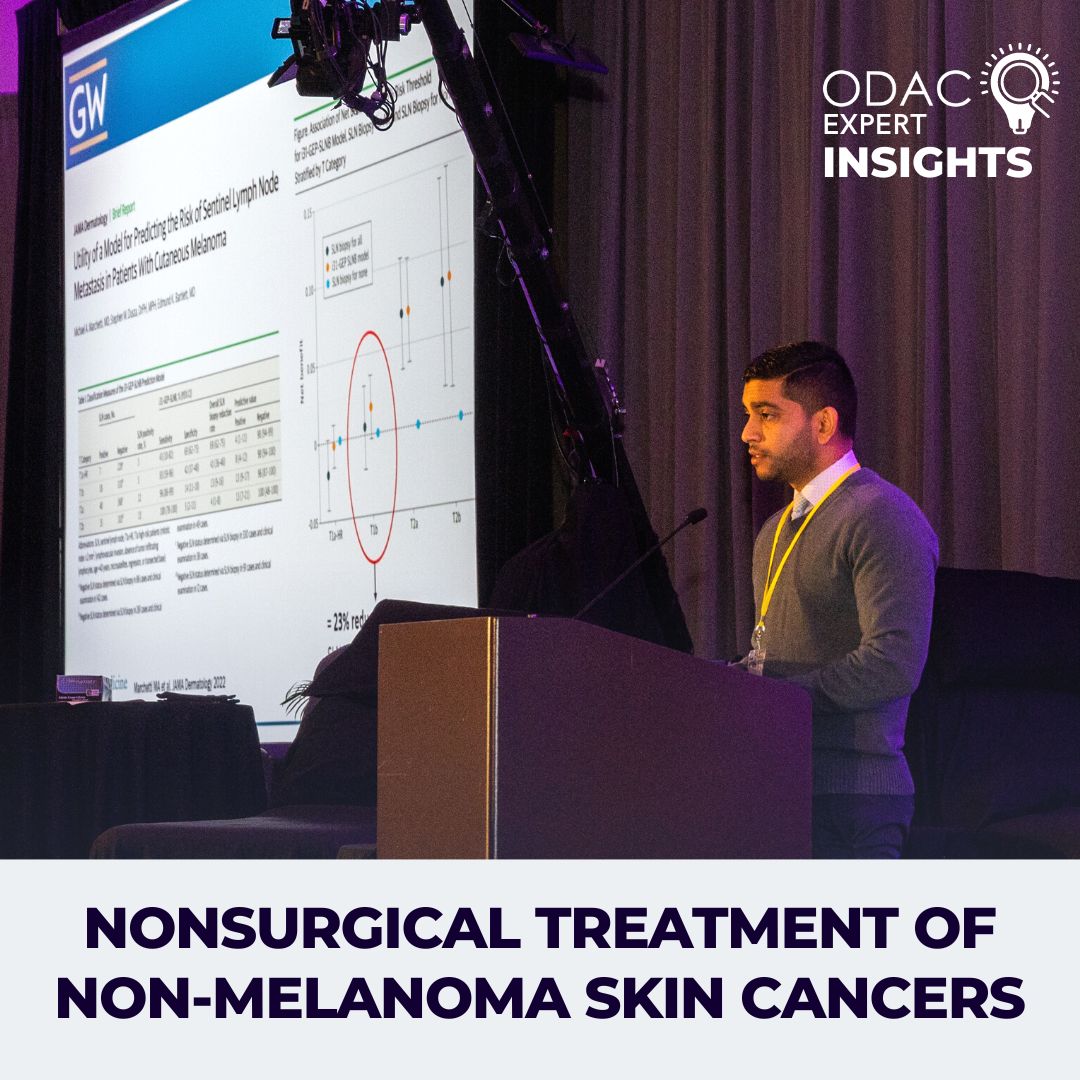Eruptive Squamous Cell Carcinomas Following Treatment With Fludarabine
 JDD authors Mihir Shah MD, Jenna Wald MD, and C. William Hanke MD MPH present a case of a patient with eruptive squamous cell carcinomas following treatment with Fludarabine to highlight not only the risk of cSCC in CLL patients and the increased risk for atypical cutaneous malignancies after treatment with systemic therapies such as fludarabine, but also to discuss treatment options for this …
JDD authors Mihir Shah MD, Jenna Wald MD, and C. William Hanke MD MPH present a case of a patient with eruptive squamous cell carcinomas following treatment with Fludarabine to highlight not only the risk of cSCC in CLL patients and the increased risk for atypical cutaneous malignancies after treatment with systemic therapies such as fludarabine, but also to discuss treatment options for this …
 JDD authors Mihir Shah MD, Jenna Wald MD, and C. William Hanke MD MPH present a case of a patient with eruptive squamous cell carcinomas following treatment with Fludarabine to highlight not only the risk of cSCC in CLL patients and the increased risk for atypical cutaneous malignancies after treatment with systemic therapies such as fludarabine, but also to discuss treatment options for this …
JDD authors Mihir Shah MD, Jenna Wald MD, and C. William Hanke MD MPH present a case of a patient with eruptive squamous cell carcinomas following treatment with Fludarabine to highlight not only the risk of cSCC in CLL patients and the increased risk for atypical cutaneous malignancies after treatment with systemic therapies such as fludarabine, but also to discuss treatment options for this … Continue reading "Eruptive Squamous Cell Carcinomas Following Treatment With Fludarabine"


 With a special focus on aesthetic treatments, check out highlights from the September issue of the Journal of Drugs in Dermatology (JDD) straight from the Editor’s desk:
A Randomized Control Trial Comparing the Efficacy of Platelet-Rich Plasma and 5% Topical Minoxidil for the Treatment of Androgenetic Alopecia suggests that PRP therapy demonstrates a higher efficacy compared to minoxidil for t …
With a special focus on aesthetic treatments, check out highlights from the September issue of the Journal of Drugs in Dermatology (JDD) straight from the Editor’s desk:
A Randomized Control Trial Comparing the Efficacy of Platelet-Rich Plasma and 5% Topical Minoxidil for the Treatment of Androgenetic Alopecia suggests that PRP therapy demonstrates a higher efficacy compared to minoxidil for t …  There are many procedural treatments that we have worked on finessing in dermatology, but for some patients with non-melanoma skin cancer, nonsurgical treatments should be discussed. We had the opportunity to review the strengths and weaknesses of nonsurgical treatment approaches for non-melanoma skin cancer and review the indications and future implications of these treatments at ODAC 2023 with D …
There are many procedural treatments that we have worked on finessing in dermatology, but for some patients with non-melanoma skin cancer, nonsurgical treatments should be discussed. We had the opportunity to review the strengths and weaknesses of nonsurgical treatment approaches for non-melanoma skin cancer and review the indications and future implications of these treatments at ODAC 2023 with D …  The best New Year's resolutions are the ones you can actually keep. Studies show that nearly half of Americans never use sunscreen and those that do, only apply 25-50% of the recommended amount.1-4
Start the New Year right with one of the easiest things you can do to prevent skin cancer—wear sunscreen daily, even when it's cloudy!
Top 10 Sunscreen New Year’s Resolutions:5-10
1. Limit time …
The best New Year's resolutions are the ones you can actually keep. Studies show that nearly half of Americans never use sunscreen and those that do, only apply 25-50% of the recommended amount.1-4
Start the New Year right with one of the easiest things you can do to prevent skin cancer—wear sunscreen daily, even when it's cloudy!
Top 10 Sunscreen New Year’s Resolutions:5-10
1. Limit time …  DID YOU KNOW?
Glycerin is among the most popular ingredients in beauty products, behind water and fragrance.1 With a 50+ year history of use, glycerin is a deceptively simple molecule classified as a powerful humectant that is anything but basic.
Glycerin is recognized by the U.S. Food & Drug Administration (FDA) as an over-the-counter skin protectant when used between 20-45%.2
…
DID YOU KNOW?
Glycerin is among the most popular ingredients in beauty products, behind water and fragrance.1 With a 50+ year history of use, glycerin is a deceptively simple molecule classified as a powerful humectant that is anything but basic.
Glycerin is recognized by the U.S. Food & Drug Administration (FDA) as an over-the-counter skin protectant when used between 20-45%.2
…